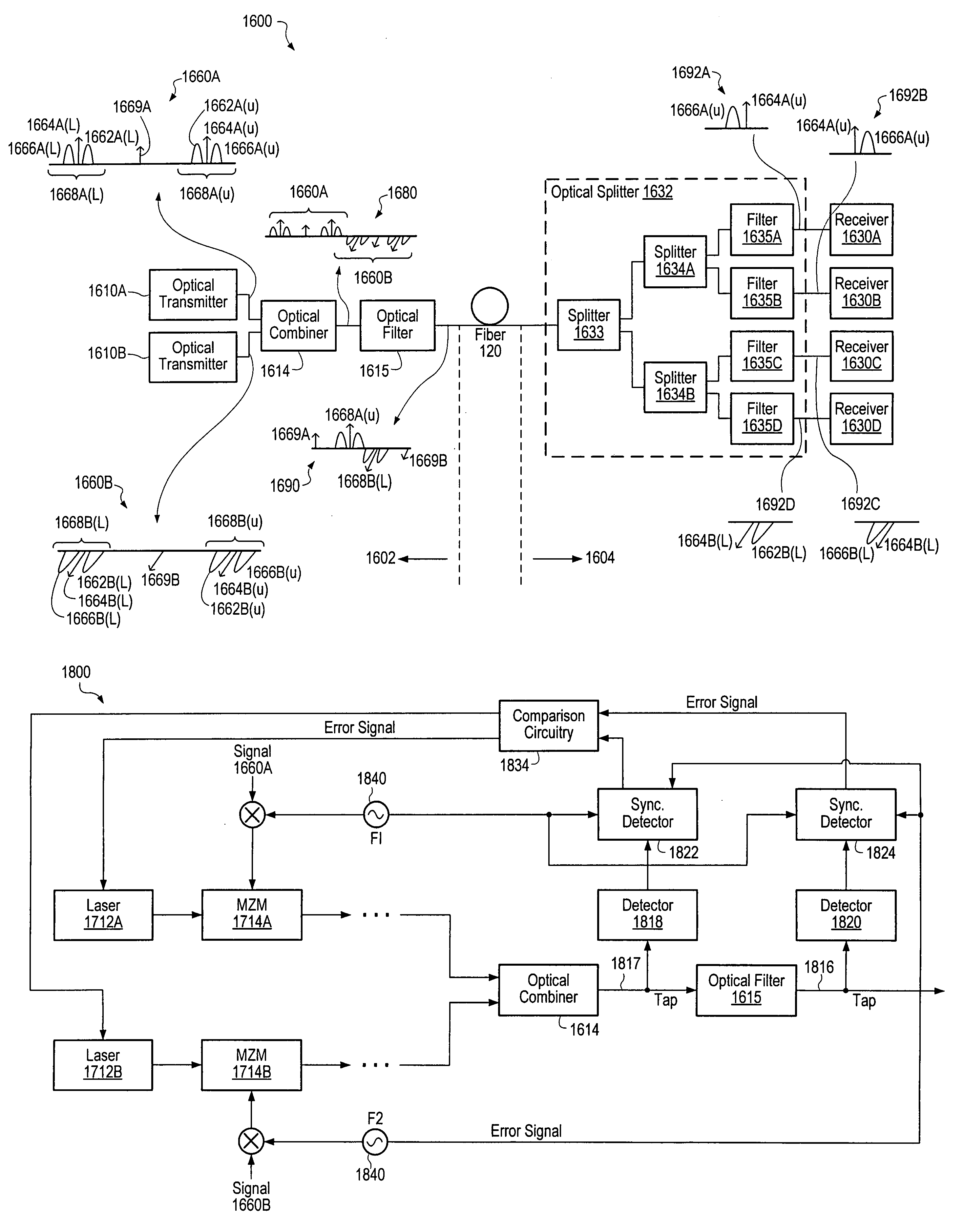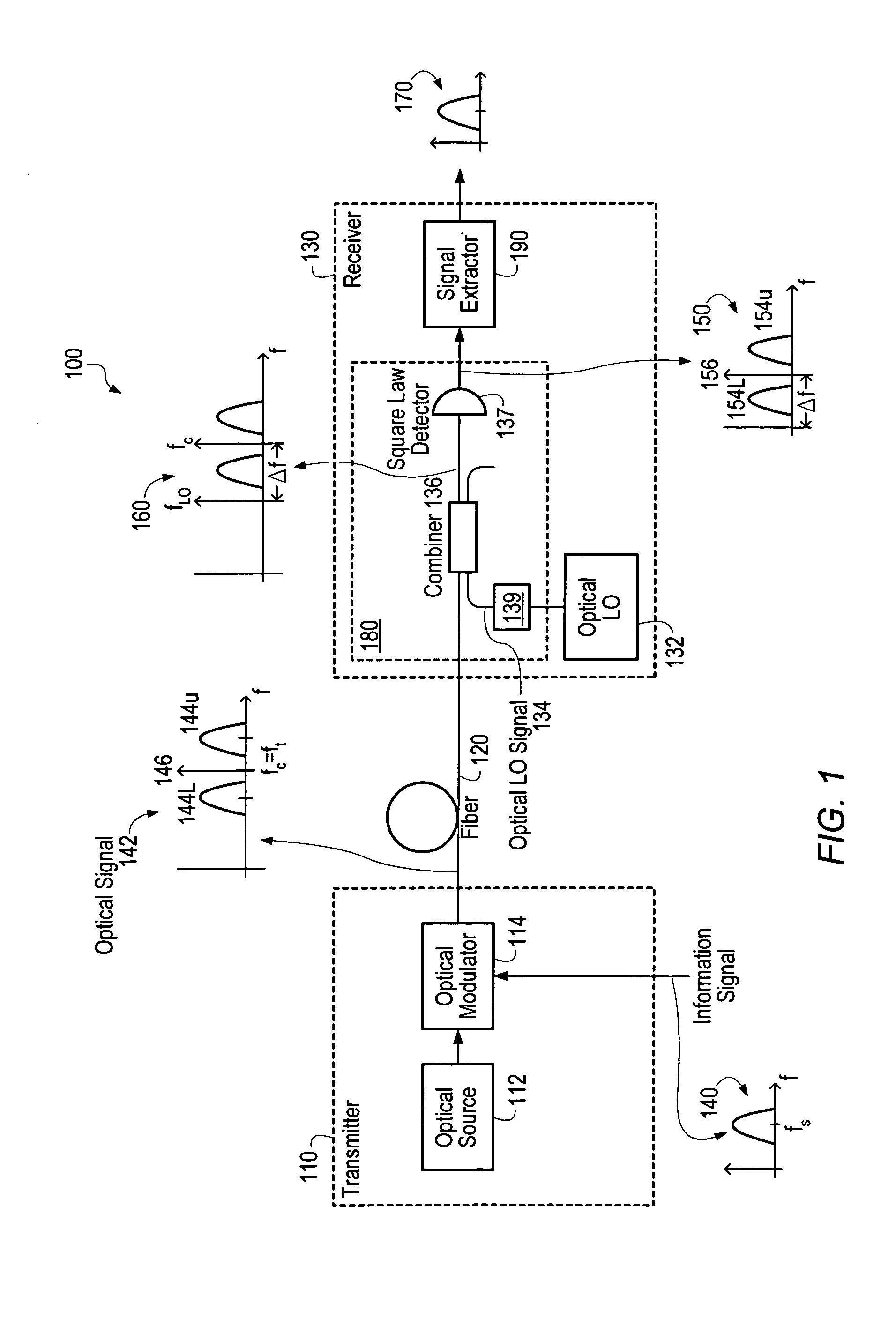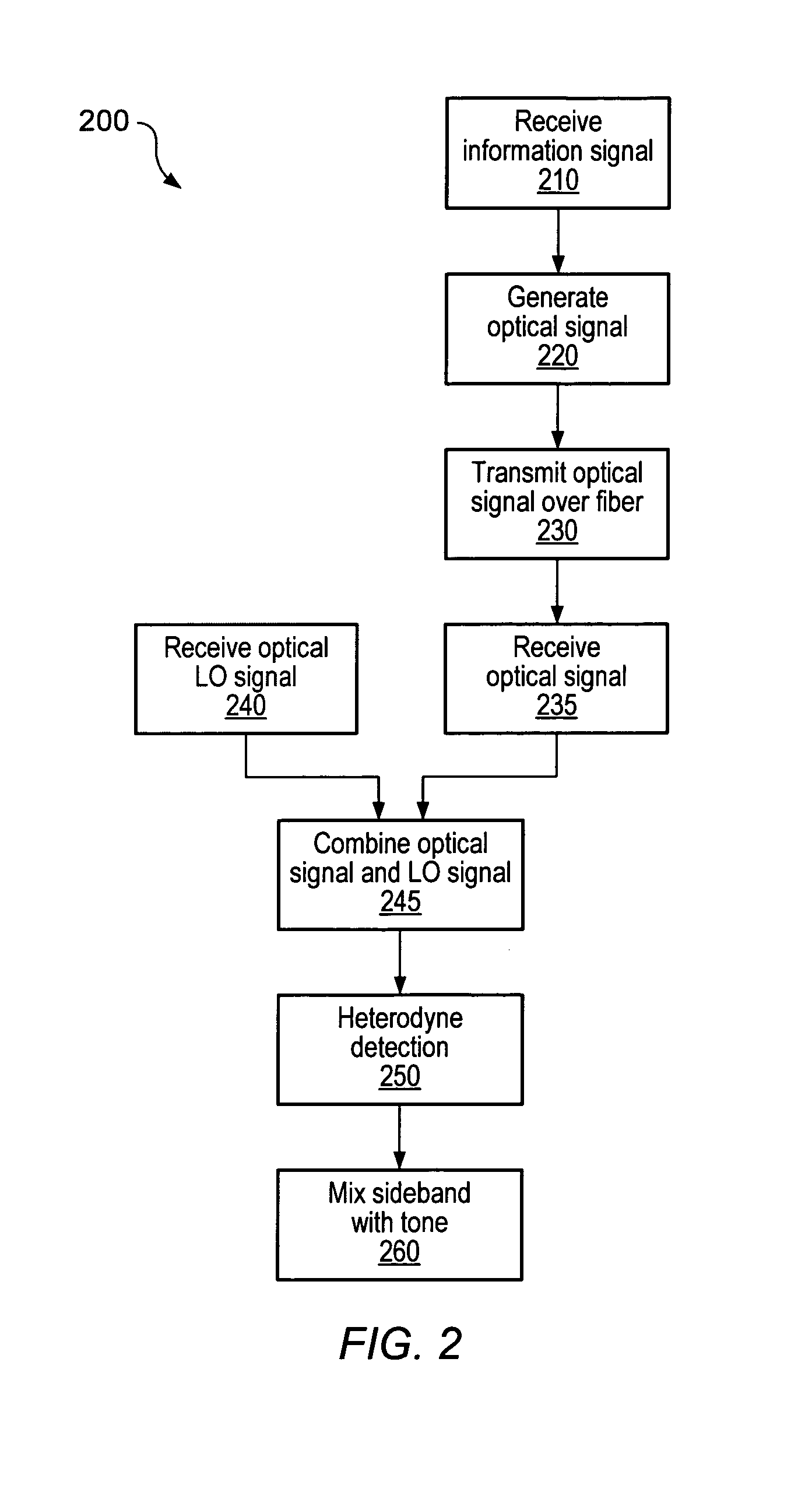Optical communications using multiplexed single sideband transmission and heterodyne detection
a technology of optical fiber communication and heterodyne detection, applied in the field of optical fiber communication, can solve the problems of limiting the performance and/or utility of current optical fiber systems, further intensifying the demand, etc., and achieve the effect of increasing bandwidth utilization
- Summary
- Abstract
- Description
- Claims
- Application Information
AI Technical Summary
Benefits of technology
Problems solved by technology
Method used
Image
Examples
Embodiment Construction
[0057]FIG. 1 is a diagram of a system 100 illustrating one aspect of the present invention. System 100 includes a transmitter 110 coupled to a receiver 130 by optical fiber 120. The receiver 130 preferably includes a heterodyne detector 180 coupled to a signal extractor 190. System 100 is used to transmit an information signal from transmitter 110 to receiver 130 via fiber 120.
[0058]With reference to the flow diagram of FIG. 2 as well as to FIG. 1, system 100 operates as follows. The frequency spectrum of an example information signal is shown by spectrum 140, which is characterized by a frequency fS. The frequency fS could be zero, for example, if the information signal is based on on-off keying. The information signal 140 may be any of a variety of signals. For example, it may be a single high speed data stream. Alternately, it may contain a number of data streams which are time-division multiplexed together, for example, if 64 OC-3 data streams are combined together to form a sin...
PUM
 Login to View More
Login to View More Abstract
Description
Claims
Application Information
 Login to View More
Login to View More - R&D
- Intellectual Property
- Life Sciences
- Materials
- Tech Scout
- Unparalleled Data Quality
- Higher Quality Content
- 60% Fewer Hallucinations
Browse by: Latest US Patents, China's latest patents, Technical Efficacy Thesaurus, Application Domain, Technology Topic, Popular Technical Reports.
© 2025 PatSnap. All rights reserved.Legal|Privacy policy|Modern Slavery Act Transparency Statement|Sitemap|About US| Contact US: help@patsnap.com



